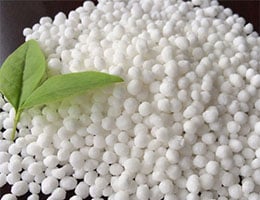 A nitrate is a salt that is produced when nitric acid combines with a base . It is important not to confuse it with nitrite , created by the combination of nitrous acid with a base.
A nitrate is a salt that is produced when nitric acid combines with a base . It is important not to confuse it with nitrite , created by the combination of nitrous acid with a base.
Nitric acid , with the chemical formula HNO3 , is a colorless, corrosive liquid that is composed of hydrogen, oxygen, and nitrogen . A base , on the other hand, is a substance that increases the concentration of hydroxyl ions if it is in solution.
When an acid combines with a base, a salt is obtained. In the process, the hydrogen atoms that were in the acid are replaced by basic radicals.
With these ideas clear, we can move forward with the definition of nitrate . This is the name given to the salt that is created by the combination of a base and nitric acid .
Nitrates can be produced in the natural environment by the breakdown of proteins , for example. Electrical discharges during a storm can also generate nitrates, as can high-temperature combustion .
Potassium nitrate , ammonium nitrate and sodium nitrate are among the nitrates used industrially. Explosives , fertilizers and other products are made with these substances.
The formula for potassium nitrate is KNO3 , and it is also known by other names, such as potassium nitrate . Currently, almost all of it is found in the sodium nitrate deposits in the deserts of Chile. The process begins when the latter is purified; Then, a reaction is caused in a solution containing potassium chloride , with the aim of crystallizing potassium nitrate, since it is less soluble.
In the past, to obtain potassium nitrate, a mixture of different types of animal waste with plant ashes and debris was used, which was irrigated with urine or water. Frequently, the outer layer was scraped and a solvent was applied to separate the insoluble parts from the soluble ones.
Ammonium nitrate is a salt that is composed of ammonium and nitrate ions . It is also known as ammonium nitrate and its formula is NH4NO3. It is a hygroscopic compound, that is, it absorbs moisture from its environment, has a high solubility in water and is also colorless. Since it is non-flammable, it is relatively safe to handle. In fact, if it is subjected to extreme heat, it tends to decompose.
 The main application of ammonium nitrate is in the form of fertilizer, since it contains a large proportion of nitrogen. Plants use nitrate, and soil microorganisms oxidize ammonium; In this way it becomes a very long-lasting fertilizer.
The main application of ammonium nitrate is in the form of fertilizer, since it contains a large proportion of nitrogen. Plants use nitrate, and soil microorganisms oxidize ammonium; In this way it becomes a very long-lasting fertilizer.
With respect to sodium (or sodium ) nitrate, we can say that it is currently achieved through a synthesis taking nitric acid as a starting point, which is obtained from ammonia . Its formula is NaNO3 and until 1920 they used to extract it from the Chilean saltpeter deposits mentioned above, but also from some in Bolivia and Peru.
After the First World War, the Haber-Bosch process became widespread, a chemical reaction of hydrogen and nitrogen in a gaseous state that allows ammonia to be obtained. This is a very important discovery, given that at an industrial level it was difficult to obtain this substance.
Chile nitrate , on the other hand, is developed from the mixture of nitrates. This natural fertilizer, which is generated in the deserts of northern Chile, is extracted from caliche (a sandy substance). As a fertilizer, Chile nitrate is generally used as a replacement for urea .
